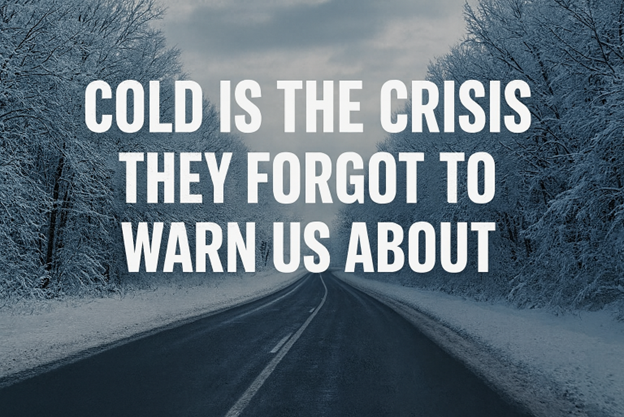
Autumn arrived weeks early, and it was not difficult to predict in advance, as it is a sign of global cooling, a pattern that has been developing in recent years. This year continues the now apparent cooling trend, with Europe, Russia, and North America enduring a string of bitterly cold nights this week, as records tumble across multiple nations. Record cold is smashing down on hundreds of millions of Americans (see details below). Do I have to remind anyone that it is still summer?
Germany experienced its third consecutive frigid August night. On August 26, widespread lows in the single digits were observed, hovering around 5°C (41°F) across central North Rhine-Westphalia. In the Ore Mountains, conditions turned even harsher with ground frost — and in places, full air frost. Several German stations have set new August cold records.
Early U.S. Cold Impacting 200 Million Americans
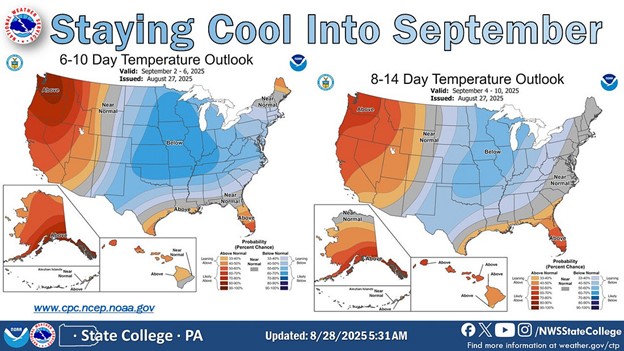
U.S. Sees Nationwide Anomaly Of -5.9°F and Record-Setting Cold. A powerful, unseasonably cold late-August chill is sweeping the lower 48, felling records all over the country. According to data from meteorologist Ryan Maue, the U.S. national temperature anomaly for August 27 stands at -5.9°F compared to the multidecadal norm — a stark departure when averaged across such a vast landmass. A powerful cold front originating from Canada is poised to dominate the central and eastern parts of the country. GFS runs show widespread anomalies of 12°C to 16°C below the 30-year norm, with pockets even colder.
Hundreds of low-temperature benchmarks have fallen across the U.S. this week. Parts of the Plains and Midwest registered temperature departures of as much as 30°F below average Tuesday/Wednesday, sparking frost advisories in the Upper Midwest.
Frost advisories were hoisted across northern Minnesota as lows dipped into the 30s in August. By Tuesday, Oklahoma City may struggle to crack 70°F (21°C), while the Great Lakes and Upper Midwest fall into the 40s overnight. This is no passing chill. Even NOAA’s outlook carries below-average temperatures through the end of August and into early September — a fall preview weeks ahead of schedule.
Lexington, KY, notched its third consecutive daily low record on Thursday, dipping to 48F (9C) — the coldest for the date since records began. Before that, on Wednesday, the city plunged to 46F (8C) — the coldest August reading in nearly 40 years. While Tuesday tied a record dating back to 1945. Average lows for late August sit around 64°F (18 °C).In neighboring West Virginia, Huntington fell to 48F (9C) Thursday, breaking a 1986 mark, while Parkersburg tied its long-standing record at 45F (7C). Records in both locations stretch back almost a century.
In northern Michigan, Roscommon plunged to 29°F (-2C) on August 27, with Grayling, Trout Lake, and Rexton all freezing at 32°F (0C). Gaylord set a new daily record low of 39°F (4 °C), breaking the mark of 40°F (4 °C) set in 1968. A widespread frost risk has farmers and gardeners bracing for potential damage, with further advisories in place through August 29.
Indiana and Michigan added to the tally. Fort Wayne posted a low of 42F (6C), breaking a 115-year record of 45F (7C) set in 1910. Coldwater, MI, tied a 109-year record with 40°F (4°C), while Jonesville set a new low at 37°F (3 °C). Lexington, KY, dropped to 46°F (8 °C) — the third coldest August reading on record for the city — breaking its August 27 record of 49°F (9 °C) set in 1968.
Even the Deep South was not spared. Central Alabama woke to fall-like air on August 27, with Birmingham dipping to 55F (13C), a new record low that broke the 1968 mark of 58F (14C). Anniston tied its 1952 record with 53°F (12C), while Shelby County Airport set a new record at 58°F (14C), beating the 2015 benchmark. One of the chilliest reports came from just east of Oneonta at 47°F (8 °C).
Summer Snow In St. Petersburg
St. Petersburg just witnessed an unusual late-summer mix of wet snow/hail. Roads and pavements were coated in a snowy slush, hail scattered the asphalt, and flooding hit low-lying areas following torrential downpours. St. Petersburg’s summer climate is typically far removed from snow. Average daytime highs in August range between 16 °C and 18 °C (61°F and 64°F), and the first snowfalls usually don’t arrive until early November.
The Lie of Manmade Global Warming Must Stop
The “hottest year ever” headlines are due to stop. That’s according to Europe’s climate agency Copernicus: “The recent streak of global temperature records is over — for now,” says its director Carlo Buontempo. That’s an official admission: the warming spike is over. Satellite data confirms it. UAH shows global temperatures falling since early 2024 (chart). The aftereffects of Volcano Hunga-Tonga appear to be dissipating. The El Niño spike is gone. La Niña could be returning, with odds rising into fall and winter (NOAA). The Earth is cooling. However, hardly anyone dares openly challenge the mainstream climate agenda. |But reality on the ground (weather) is quickly crushing the mainstream narrative. The credibility of mainstream climate science should have been called into question years ago.
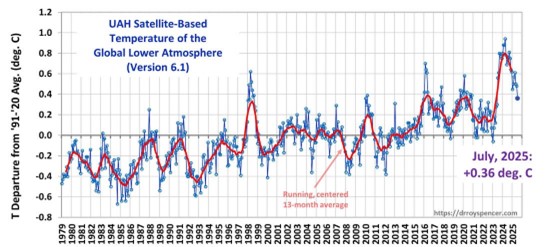
Human history shows prosperity flourishes under strong solar output. Weaker cycles, by contrast, have aligned with brutal cooling epochs and great hardship: crop failures, mass migration, societal breakdown — with the cold often setting in abruptly, within just a handful of years. NOAA is predicting a steep drop off, almost to zero sunspots, starting as soon as 2029, with the bottom dropping out throughout the next decade. Presently, the Sun is virtually blank again — just four weak sunspot groups dot the disk.
The UAH satellite dataset shows the global lower tropospheric temperature anomaly for July 2025 at 0.36°C, down from June’s 0.48 °C, underscoring the ongoing cooling trend. That’s a 0.12C drop in a month, driven largely by the extra-tropical Southern Hemisphere (which plunged from 0.55C to 0.10C). And since the April 2024 peak (15 months), global temperatures have fallen a significant 0.6C. “At this rate, we would be in the next mini-ice age in just 5 years (-3C),” points out climate researcher Javier Vinós on X, I assume tongue-in-cheek (but maybe not).
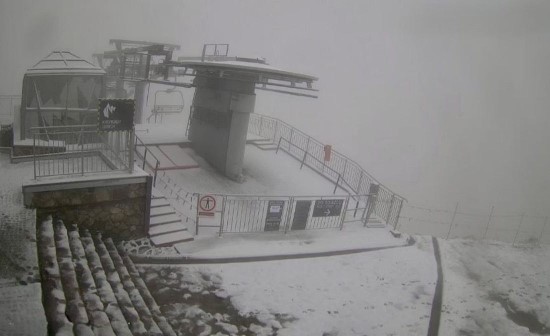
Record Cold Slovakia, Hungary’s Lowest-Ever Summer Temp
In Slovakia’s High Tatras, atop Lomnický štít —the nation’s second-highest peak— a low of -8C (17.6F) has been observed — the coldest August reading there in 45 years. The only colder August values were recorded in 1980: -8.4 °C (16.9°F) on August 25 and -8.2 °C (17.2°F) on August 26. Even more remarkably, Hungary has just logged its coldest summer temperature ever. This week, Mohos Sinkhole on the Bükk Plateau tanked to -10.1 (13.8°F) — extraordinary for the height of summer. The Mohos station, according to its data, was below freezing by 7:30 PM, at -5C (23F) by 9 PM, and reached -10.14C before dawn.
Perth Endured Its Coldest Day in Half a Century
On Monday, Western Australia’s capital city recorded a maximum temperature of just 11.4 °C (52°F) — the city’s coldest day since July 1975. Temperatures across the western parts of the state were 5–10 °C below average, with some towns barely climbing into single digits.
A study published in Geophysical Research Letters finds that Arctic sea ice loss has undergone a pronounced slowdown over the last 20 years. The authors report no statistically significant decline in September sea ice area since 2005.
Record August Chill Hits Yemen And Saudi Arabia
Cool, wet conditions have swept southwest Saudi Arabia and neighboring Yemen this week, delivering record-breaking cold. The Saudi coastal city of Gizan has registered a max of just 30.5C (87F) — making for the coldest August day ever recorded there. While in Yemen, notably in the highland villages, overnight lows dropped to 7 °C (45°F), in Saada, again, an extraordinary chill for this time of year.
Get ready for colder times, but we humans like warmth. Life thrives in warmth. Heat accelerates chemical reactions, stimulates plant growth, and enhances biodiversity. Longer growing seasons mean more food. Warmer climates demand less energy for survival, freeing resources for population growth. Cold slows metabolism, shortens seasons, and limits food supply.
Coffee Like Warmth Too
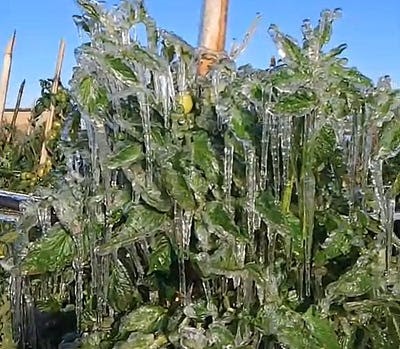
Brazil’s key coffee regions are enduring a punishing sequence of cold events that threaten to cripple the already weakened 2026 harvest. Frost is hitting the delicate flowering phase that sets next year’s crop, stress from which can linger for months. Brazil’s Cooxupé —the world’s largest coffee cooperative, based in Guaxupé, Minas Gerais— has reported warehouses running at just 60% capacity at the close of the 2025 harvest. Normally those warehouses are full. Coffee is the canary in the coal mine. Arabica, the dominant variety, survives only in a narrow thermal band — slip a few degrees colder and yields collapse. In 1975 a single frost wiped out two-thirds of Brazil’s crop overnight and rewired global supply.
Dr.Sircus is a reader-supported publication. To receive new posts and support my work, consider becoming a free or paid subscriber.
Subscribe now



comments